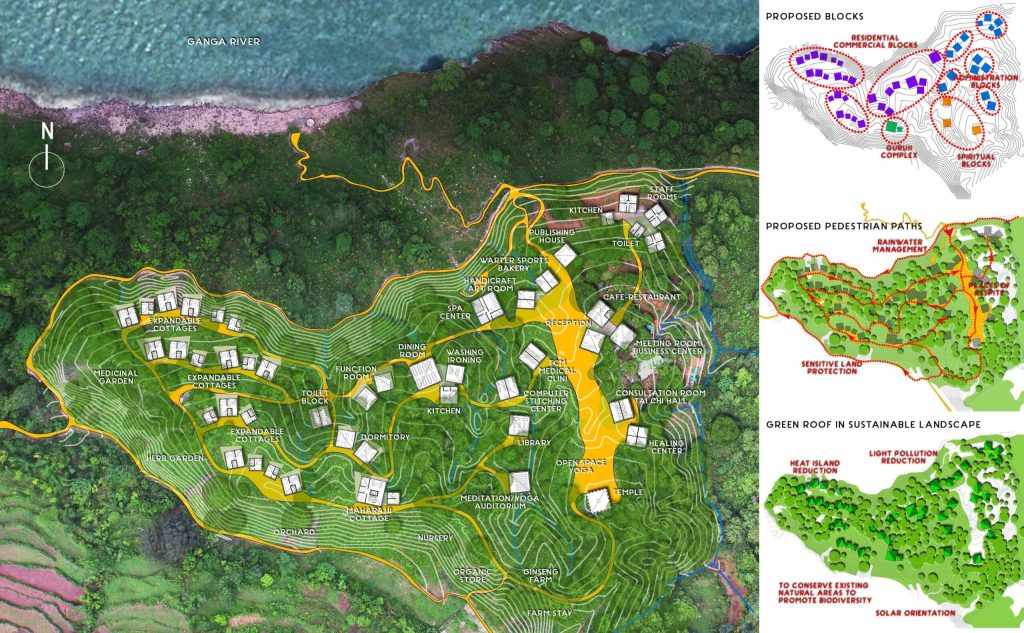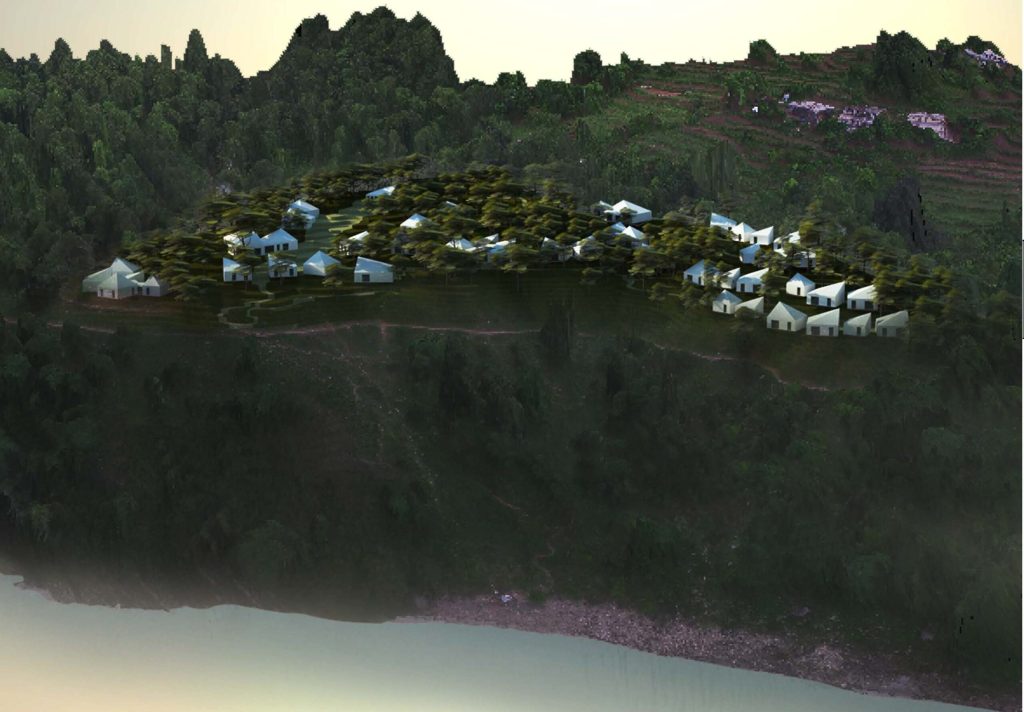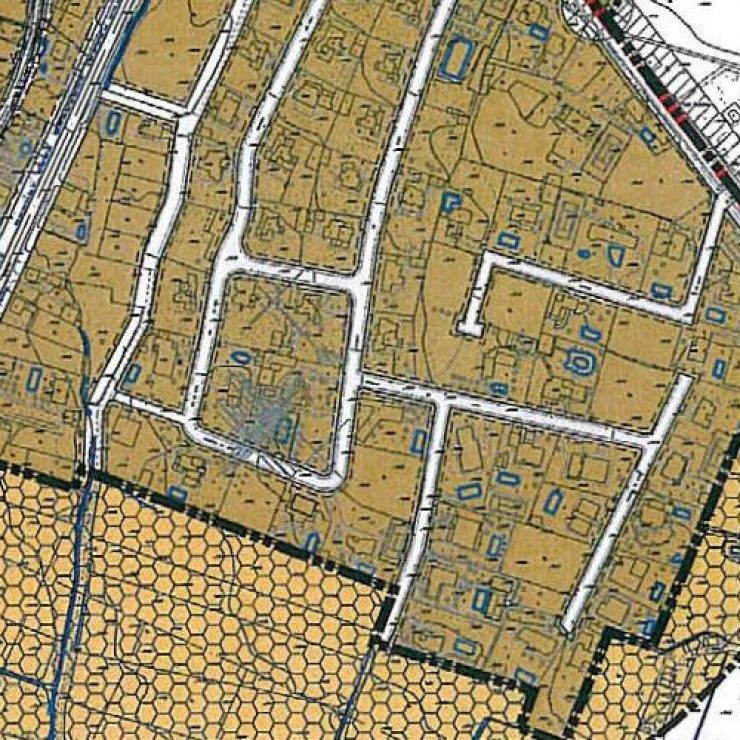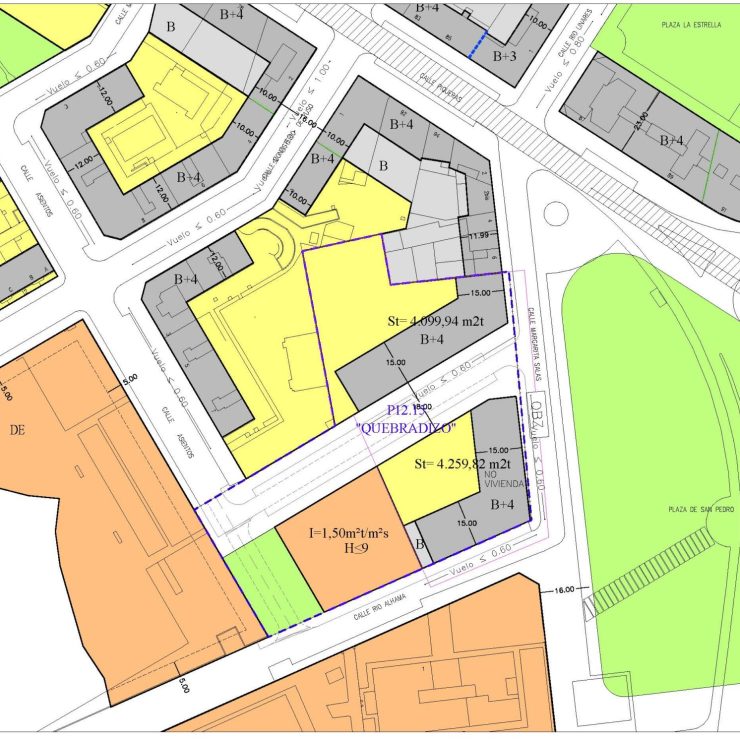
Sirasu Master Plan
ANDThe Masterplan consists of designing the layout of a retreat and meditation centre on a two-hectare site located in the town of Sirasu in northern India. This town borders the Ganges River to the north and is characterised by being a region of contemplative pilgrimage and meditation with a large influx of tourists throughout the year.
The programme is made up of 10 single units, 10 double or family units, 4 units with 10 beds, service areas consisting of a dining room, kitchens, a spa, changing rooms, accommodation for service personnel, reception and welcome areas, business areas, a meditation temple and a temple for the spiritual director. In total, it has 7,500 m2 of built area.







